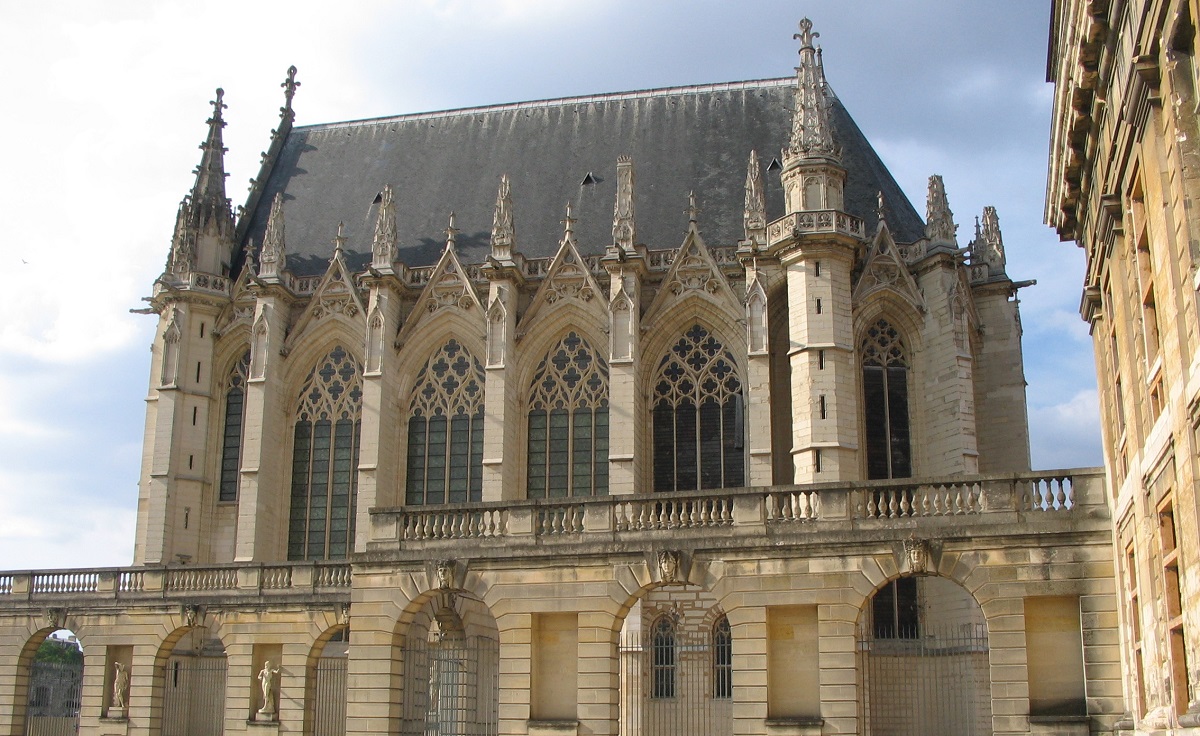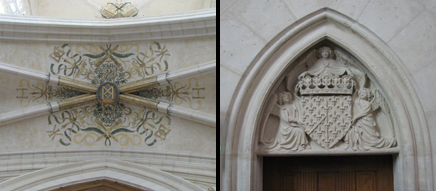
In terms of wow power, it’s only natural for daytrippers from Paris to choose Versailles, Fontainebleau or Chantilly as their top three excursions to chateaux of the palatial kind.
But you needn’t even be a daytripper to visit a chateau of the fortified castle since the only example of one in the Paris region is at the end of a metro line. Two to three hours will suffice to treat yourself to a visit to the Castle of Vincennes, including it’s central keep and royal chapel.
The Sainte Chapelle in Paris, a royal chapel once attached to the palace of the kings of France, is well known as a jewel of 13th-century stained glass and Gothic architecture. Far less known yet deserving a place on the trails of the return traveler is France’s other great Sainte Chapelle, the royal chapel at the Chateau de Vincennes, which reopened in May 2009, after nine years of restoration. This is the only medieval fortified castle remaining in the Paris region.
Vincennes is an easy 20-minute metro ride from the center of Paris. To get to there you need only take the metro to the end of the Château de Vincennes line (line 1), step outside, and cross the drawbridge over the moat.
The Sainte Chapelle of Vincennes doesn’t have the explosive beauty of the chapel in Paris, but it is in fact a direct decendent of the royal chapel in Paris. Sainte Chapelle means holy chapel, a name typically used to designate a royal chapel built to house important relics.
Like the Sainte Chapelle in Paris, the sanctity of Vincennes’s chapel came from the fact that at one time or another both held articles sold to King Louis IX in 1237 said to be relics of Christ’s Passion: a piece of the Cross and the Crown of Thorns. (They’re now kept at Notre-Dame.)
Louis IX (1214-1270) ordered the construction of the Sainte Chapelle at his castle in Paris specifically to house, reflect, and honor the significance of those relics. He also set about transforming a royal hunting lodge at Vincennes, to the east of his capital, into a fortified castle and an important seat of his power. Already the relics were being held at Vincennes while awaiting construction of the chapel in Paris.
It was from Vincennes that the king bid farewell to his family before leading the Crusades of 1248 and 1270, the 7th and 8th Crusades. He died in Tunisia on that final crusade. By then he had transformed the royal castle at Vincennes into the second major royal abode after that on Ile de la Cité in the middle of Paris.
 In 1379, Charles V (1338-1380) called for the construction of the Sainte Chapelle at Vincennes. During an era whose history would eventually be dominated by The Hundred Years War, the project was part of an effort to solidify both his power and his castle in the face of threats to his in reign from nearby dukedoms, from within Paris itself, and from the English. The dungeon/keep, seen here, was completed by the time of death. Guided tours given there reveal details of his royal abode and great library as well as the history of the dungeon as a prison once the kings no longer need it for their own protection.
In 1379, Charles V (1338-1380) called for the construction of the Sainte Chapelle at Vincennes. During an era whose history would eventually be dominated by The Hundred Years War, the project was part of an effort to solidify both his power and his castle in the face of threats to his in reign from nearby dukedoms, from within Paris itself, and from the English. The dungeon/keep, seen here, was completed by the time of death. Guided tours given there reveal details of his royal abode and great library as well as the history of the dungeon as a prison once the kings no longer need it for their own protection.
As to the chapel, it was just getting started when Charles V died. Though initially pursued under his son’s reign, it advanced through fits and starts and it wasn’t completed until 1552, under Henri II. That explains the Hs that decorate the chapel’s vaulted ceiling, below left. The detail below right indicates that it was built as a French royal chapel.
On Dec. 26, 1999, winds whipping through the Paris region at 90 miles an hour broke though stained glass and destabilized vaults and damaged sculptural work inside and out, so the chapel required important restoration work. It reopened this week for the first time since then, though renovations will continue on the exterior and in some windows.
While Vincennes’s chapel doesn’t have the impressive stained glass of the Sainte Chapelle in Paris, its glass and stone form a peaceable, harmonic space inside beneath a gracious vaulted ceiling.
In addition to its medieval portions (chapel, dungeon, moat) of the Castle of Vincennes, the former royal complex also has major remnants from its role as a 17th-century pleasure palace designed under Louis XIV’s instructions by the architect Le Vau. But Louis soon lost interest in Vincennes in favor of Versailles (on which Le Vau also worked), and Vincennes (and the area east of Paris) was abandoned as a royal residence in 1682 when the king officially moved the French Court to Versailles.
In March 1804, Napoleon Bonaparte, while still First Consul and about to declare himself Emperor Napoleon I, had the Duke of Enghien assassinated in March 1804 based on false accusations of preparing a royalist plot.
Napoleon ordered the complex converted into barracks for his army and then also an arsenal. The Vincennes complex still belongs to the Army.
Admission to the complex is free, however, there is an admission fee for the chapel and dungeon, which may be visited on a guided tour. Open daily. For opening times and tour schedule see here.
Also see A Man’s Home May Not Be His Chateau: From Versailles to Vincennes.
Other religion, other relics: While Vincennes’s Sainte Chapelle no longer has a religious function, a major religious structure elsewhere in the Vincennes Woods (Bois de Vincennes) is very much in operation. That’s the Grand Buddhist Pagoda, which received the relics of the Buddha Sakyamouni that recently arrived from Thailand. The Grand Pagoda is located in the park a 15-minute walk from the Porte Dorée metro station (line 8).


